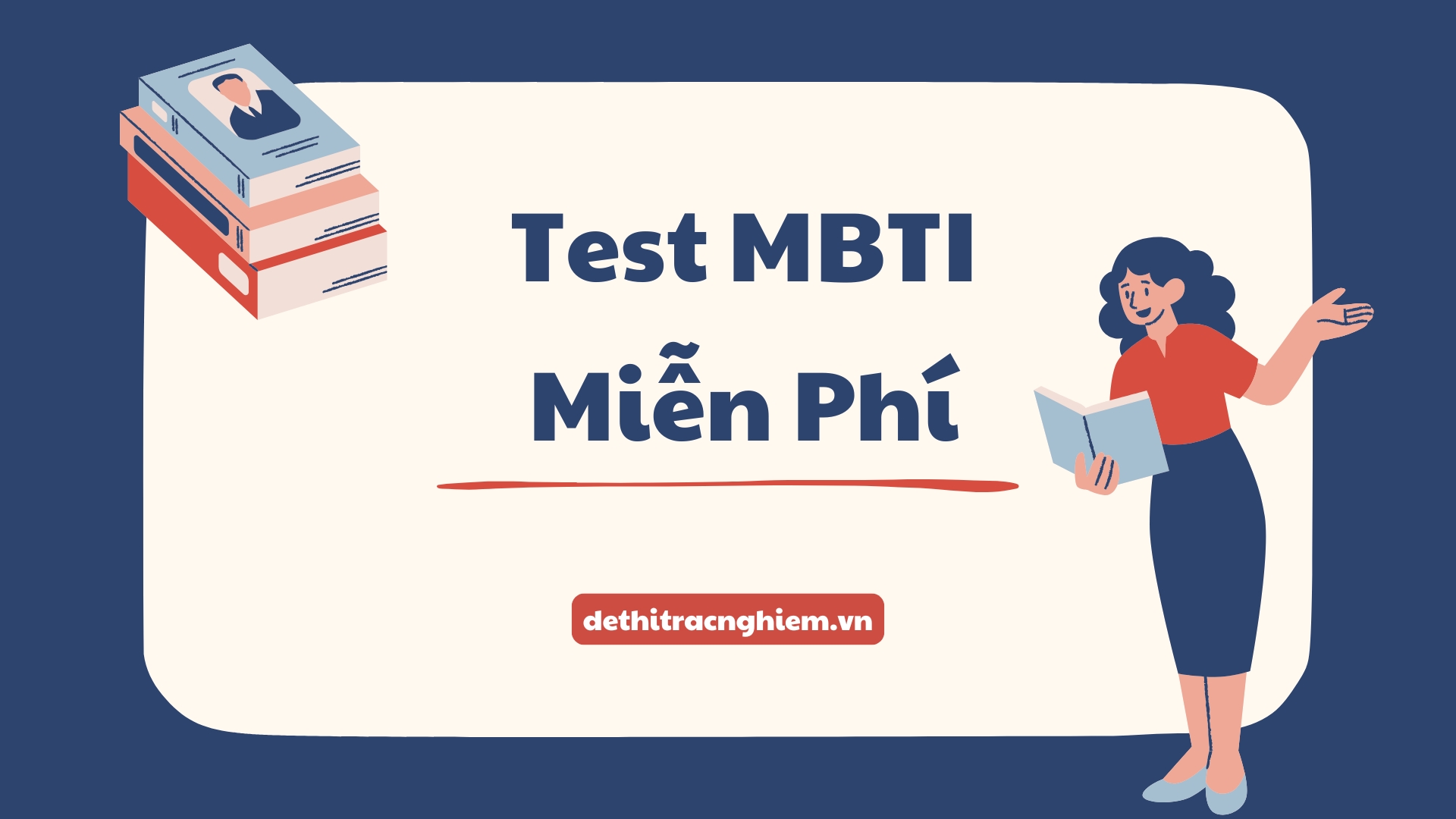Đề thi Tài Chính Quốc Tế tiếng Anh là một trong những đề thi quan trọng thuộc môn Tài Chính Quốc Tế, được thiết kế hoàn toàn bằng tiếng Anh nhằm kiểm tra cả kiến thức chuyên ngành lẫn kỹ năng sử dụng thuật ngữ tài chính quốc tế trong ngôn ngữ học thuật. Đề thi thường bao gồm các dạng bài trắc nghiệm và tự luận với các chủ đề trọng tâm như: tỷ giá hối đoái (exchange rates), thị trường ngoại hối (foreign exchange market), công cụ phái sinh tài chính (financial derivatives), phương thức thanh toán quốc tế (international payment methods), quản trị rủi ro tài chính (financial risk management) và đầu tư quốc tế (international investment). Khi làm Đề thi Tài Chính Quốc Tế tiếng Anh, sinh viên cần vận dụng chính xác các công thức, hiểu sâu các khái niệm và rèn luyện khả năng đọc hiểu, phân tích tình huống bằng tiếng Anh. Đây là tài liệu quan trọng giúp sinh viên chuẩn bị tốt cho các kỳ thi quốc tế và các chương trình đào tạo giảng dạy bằng tiếng Anh.
Hãy cùng Dethitracnghiem.vn khám phá bài học này và tham gia làm bài kiểm tra ngay bây giờ!
Đề thi Tài Chính Quốc Tế tiếng anh
Câu 1: What is the primary purpose of the foreign exchange market?
A. To set global interest rates.
B. To trade commodities internationally.
C. To facilitate the conversion of one currency into another.
D. To regulate international trade agreements.
Câu 2: A system where the value of a currency is fixed against the value of another currency or a basket of currencies is known as:
A. Floating exchange rate system.
B. Managed float system.
C. Fixed exchange rate system.
D. Free-floating system.
Câu 3: The theory suggesting that the exchange rate between two currencies will adjust to reflect changes in the price levels of the two countries is called:
A. Interest Rate Parity (IRP).
B. Purchasing Power Parity (PPP).
C. Fisher Effect.
D. International Fisher Effect (IFE).
Câu 4: Which of the following is recorded as a credit in the U.S. balance of payments?
A. U.S. imports of goods.
B. U.S. tourists spending money in France.
C. A French company purchasing U.S. government bonds.
D. U.S. aid given to a developing country.
Câu 5: The Bretton Woods Agreement established which of the following institutions?
A. The World Trade Organization (WTO).
B. The Bank for International Settlements (BIS).
C. The International Monetary Fund (IMF) and the World Bank.
D. The Organization for Economic Co-operation and Development (OECD).
Câu 6: An exchange rate that is determined by market forces without central bank intervention is a:
A. Pegged exchange rate.
B. Freely floating exchange rate.
C. Managed float exchange rate.
D. Crawling peg.
Câu 7: If the spot rate for EUR/USD is 1.10, and the 90-day forward rate is 1.12, the euro is said to be trading at a:
A. Forward discount.
B. Forward premium.
C. Par value.
D. Spot discount.
Câu 8: The risk that a foreign government will unexpectedly change its laws or regulations, adversely affecting a multinational corporation’s operations, is known as:
A. Exchange rate risk.
B. Economic risk.
C. Political risk.
D. Translation risk.
Câu 9: Which account in the Balance of Payments records transactions involving the purchase and sale of assets, such as stocks and bonds?
A. Current Account.
B. Financial Account (or Capital Account in older terminology).
C. Official Reserves Account.
D. Trade Account.
Câu 10: The direct exchange rate quotes the:
A. Value of a foreign currency in terms of the domestic currency.
B. Value of the domestic currency in terms of a foreign currency.
C. Cross rate between two foreign currencies.
D. Forward rate for a future transaction.
Câu 11: A currency swap involves:
A. The immediate exchange of two currencies at the spot rate.
B. An agreement to exchange currencies at a future date at a predetermined rate.
C. The exchange of principal and/or interest payments in one currency for equivalent payments in another currency.
D. The right, but not the obligation, to buy or sell a currency at a specified price.
Câu 12: The phenomenon where an increase in a country’s money supply leads to a proportional depreciation of its currency in the long run is most closely associated with:
A. The J-curve effect.
B. The monetary approach to exchange rates.
C. The portfolio balance approach.
D. The crawling peg system.
Câu 13: What is the main objective of the International Monetary Fund (IMF)?
A. To promote long-term economic development and poverty reduction.
B. To ensure the stability of the international monetary system.
C. To facilitate free trade agreements between member countries.
D. To provide loans for infrastructure projects in developing nations.
Câu 14: Arbitrage in the foreign exchange market refers to:
A. Speculating on future currency movements.
B. Hedging against exchange rate risk.
C. Simultaneously buying and selling a currency in different markets to profit from price discrepancies.
D. Lending and borrowing in different currencies.
Câu 15: If the U.S. dollar depreciates against the Japanese yen, then:
A. U.S. goods become more expensive for Japanese consumers.
B. Japanese goods become more expensive for U.S. consumers.
C. U.S. exports to Japan are likely to decrease.
D. Japanese imports from the U.S. are likely to decrease.
Câu 16: The “Eurocurrency” market refers to:
A. The market for the official currency of the Eurozone.
B. A market exclusively for European currencies.
C. Bank deposits and loans made in a currency outside its country of origin.
D. The foreign exchange market located in Europe.
Câu 17: Which of the following is a type of exchange rate exposure faced by multinational corporations?
A. Liquidity exposure.
B. Credit exposure.
C. Translation exposure.
D. Market share exposure.
Câu 18: A Letter of Credit (L/C) is primarily used in international trade to:
A. Provide financing for the importer.
B. Reduce the risk of non-payment for the exporter and non-delivery for the importer.
C. Hedge against foreign exchange rate fluctuations.
D. Facilitate currency speculation.
Câu 19: The “Fisher Effect” states that the nominal interest rate in a country is approximately equal to:
A. The real interest rate minus the expected inflation rate.
B. The real interest rate plus the expected inflation rate.
C. The spot exchange rate adjusted for the forward premium.
D. The expected change in the exchange rate.
Câu 20: A “dirty float” or “managed float” exchange rate system is one where:
A. The exchange rate is strictly fixed by the central bank.
B. The exchange rate is determined purely by market forces.
C. The central bank intervenes in the foreign exchange market to influence the exchange rate, but does not target a specific level.
D. The currency is pegged to a basket of other currencies.
Câu 21: Which of the following would likely cause a country’s currency to appreciate?
A. A decrease in domestic interest rates relative to foreign interest rates.
B. Higher domestic inflation compared to foreign inflation.
C. Increased demand for the country’s exports.
D. A significant current account deficit.
Câu 22: The “J-Curve” effect describes:
A. The long-run impact of monetary policy on exchange rates.
B. The short-term worsening of a country’s trade balance after a currency devaluation, followed by an improvement.
C. The relationship between interest rates and inflation.
D. The pattern of foreign direct investment flows.
Câu 23: A multinational corporation (MNC) might use a forward contract to:
A. Speculate on future interest rate movements.
B. Hedge against the risk of unfavorable exchange rate movements for a future transaction.
C. Invest in foreign government bonds.
D. Obtain short-term financing in a foreign currency.
Câu 24: The “Law of One Price” suggests that:
A. All goods should have the same price in all countries when expressed in a common currency, after accounting for interest rates.
B. Identical goods sold in different countries should sell for the same price when expressed in a common currency, assuming no trade barriers or transportation costs.
C. Interest rates should be equal across countries after adjusting for expected exchange rate changes.
D. Inflation rates will eventually equalize across countries engaged in free trade.
Câu 25: What is a “Eurobond”?
A. A bond issued by a European government.
B. A bond denominated in Euros.
C. A bond issued in a currency other than that of the country or market in which it is issued.
D. A bond exclusively traded within the Eurozone.
Câu 26: Transaction exposure in international finance refers to:
A. The impact of exchange rate changes on the reported financial statements of a company.
B. The long-term effect of exchange rate changes on a company’s competitive position.
C. The risk that exchange rate fluctuations will affect the value of specific, outstanding contractual obligations denominated in a foreign currency.
D. The risk of default by a foreign counterparty.
Câu 27: The “impossible trinity” (or trilemma) in international economics suggests that a country cannot simultaneously have:
A. High inflation, low unemployment, and a fixed exchange rate.
B. Free trade, capital controls, and a floating exchange rate.
C. A fixed exchange rate, free capital movement, and an independent monetary policy.
D. A current account surplus, high interest rates, and currency appreciation.
Câu 28: What does “LIBOR” stand for?
A. London Interbank Offered Rate.
B. Local Interbank Official Rate.
C. London Interbank Offered Rate. (Note: While being phased out, it’s still a key historical term)
D. Lisbon International Borrowing Rate.
Câu 29: If a country has a persistent current account deficit, it implies that:
A. The country is exporting more than it is importing.
B. The country is importing more than it is exporting, or its net income from abroad is negative.
C. The country’s foreign assets are increasing.
D. The country’s currency is likely to appreciate.
Câu 30: A currency option provides the holder with:
A. The obligation to buy or sell a currency at a specified price.
B. The right, but not the obligation, to buy or sell a currency at a specified price on or before a specified date.
C. A guaranteed exchange rate for a future transaction.
D. A share of ownership in a foreign company.




